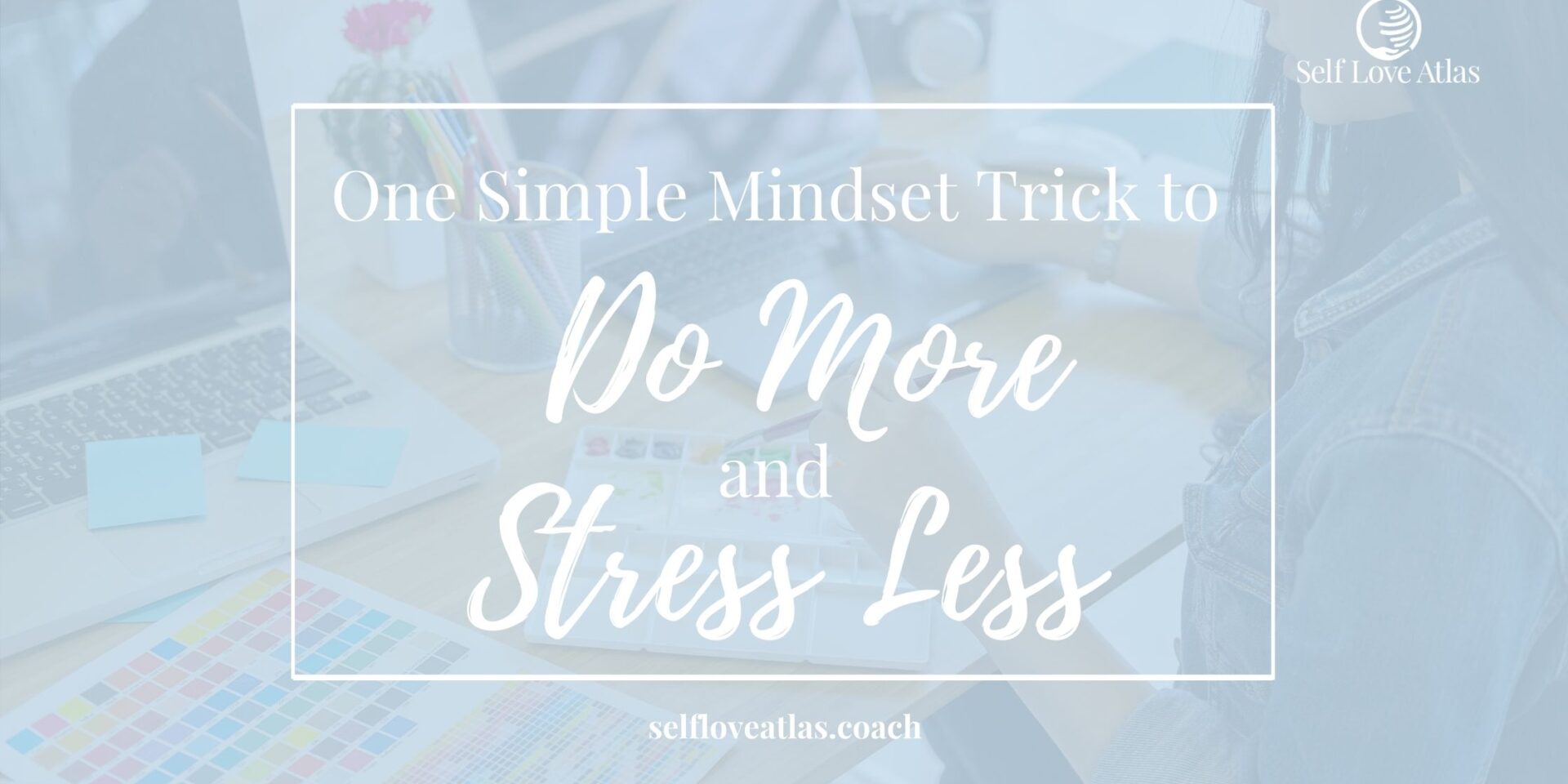One Simple Mindset Trick to Do More and Stress Less
We say “I need to…” when something has been assigned at work or school. We say “I need to…” when we have chores that are overdo. And we say “I need to…” when we’re avoiding the next thing on our to-do list. Usually when we use this language, we’re referring to tasks that we aren’t looking forward to. But regardless of how we feel when we think about them, we know they have to get done somehow. In this post, you’ll learn how the way we think about these kinds of tasks can actually make them feel more stressful than they need to be. You’ll also find a clear process to shifting your mindset, so you can stress less and do more.
The Thought “I need to” Causes Stress
The tasks in your life don’t get stressful until there’s pressure involved. In fact, having tasks on your to-do list is a neutral circumstance until you start worrying and wondering “How am I going to do this?” or “Ugh, I really don’t want to do this, how am I going to make myself do it?”
The language of “I need to…” is one of the many ways we add this pressure to our circumstances.
Perhaps you say “I need to” because you subconsciously believe adding that pressure will help you complete the task. (I do this out of habit all the time.)
Or maybe you say “I need to” because you want yourself to take your tasks seriously, because you want to be productive, or want to perform well.
But the truth is, this pressure doesn’t help us as much as we think it does. If anything, it can sometimes make it even harder to complete our tasks.
Don’t believe me? Test it for yourself using this exercise.
Thought Exercise:
(Feel free to try this multiple times with each of the important things on your to-do list, especially the things you don’t want to do.)
- Think about the day or the week ahead of you, and then fill in the blank with whatever comes to your mind. “I need to _________”? Feel free to list multiple things you need to do.
- If the only things you need to do in the next few days are relax and cuddle your dog, then try thinking about something specific you feel you need to do in the future (ex. Pay your bills, pass your classes, clean your house, run a meeting, etc.)
- State the fact that you need to do it, say “I need to do these dishes,” or whatever it is that you need to do.
- Take a moment to notice how you feel. Does it make you feel uncomfortable, stressed out, or paralyzed? How does this thought affect you? Does it cause sensations in your body?
- When you feel this way, how do you react? What do you do? Does your reaction make it harder to complete the task?
If yes, great! Because together, we can use some simple logic to begin relieving that stress, so you can effectively do the stuff you gotta do.
Note: After doing the exercise, you might be thinking, “It’s not the thought that stresses me out! It’s the fact that I have to do it in the first place!” To that I say, even that is a thought. It may be true and real that you have to do it, but at the same time, it’s also appearing as a thought in your mind.
Your “I need to” Mindset Isn’t Helping You Get Things Done
In my experience, “I need to” or “I have to” implies an urgency. It implies that something should be done soon, if not immediately. The emotions that come up along with that urgency (perhaps the ones you found in your exercise) often are unhelpful in the actual “doing” part of the task.
In other words, it puts you in the wrong mindset for following through.
Related post: Urgency is Incompatible with Peace
This is interesting, because we often think this thought will help us be more productive. But the truth is often exactly the opposite.
If this resonates with you, remind yourself: “My stressed/urgent mindset will not help me do what I need to do.”
This is where we get strategic.
Now that you know your “I need to” mindset might be slowing you down, here’s some questions to help you get to a mindset that serves you better.
You can keep the thought “I need to”, because we can’t really control that it’s there. But if you can, kindly push it aside for a moment, even if it’s just for two minutes, so you can allow yourself to transition into a more helpful mindset.
Ask yourself the following…
- What kind of emotions could help me do this thing that I need to do? Many people answer, “relaxed,” “ focused,” “calm,” or “peaceful”. But each person may have their own word for what would be helpful to them.
- How would doing the task feel different in this mindset/feeling-state, compared to your previous one?
- What could I do to get into that mindset? Consider the ways you could “warm yourself up” to the task you “need to do.” (For example, if you want to be able to think clearly and feel focused, what could you do to bring yourself into a focused headspace?)
Yesterday, when I had the thought “I need to write my blog post today,” I felt tension and stress arise in my body. But when I asked myself, “What can I do to get in the right mindset to write?” I thought, “Maybe I can go for a quick walk so I can brainstorm my post before I start writing!”
If I hadn’t asked myself that question, I would have sat in front of my computer for an hour trying to figure out how to start this. Perhaps I would’ve just sat here repeating to myself, “I need to write this freaking post.”
But because I allowed myself the five minutes of freedom to choose my own mindset warm-up, this post is on track to take half the time that it usually takes me to write a post!
Taking a few minutes to get in the right mindset will make it easier to perform your task, and also save you time overall.

Notice the potential your improved mindset has to help you be more efficient, more productive, and possibly even happier, as you go on to complete your task.
For me, just this simple shift gives me a reason to stress less.
When I trust that working with myself to get in the right headspace will help in the long run, then the whole ordeal becomes way less dreadful than I was anticipating originally.
Ultimately, when you do this, you won’t fall behind, and the only thing you’ll lose is some of the stress that was holding you back.
So if you can, the next time you’re thinking “I need to,” see if you can suspend that thought just long enough for you to be with yourself. Ask yourself compassionately what mindset will work better for you. Then, give yourself the time and space to get there.
Did this post resonate with you? If so, I’d love to hear from you! Leave a comment or send me a message to share your thoughts. For more uplifting content, check out some other posts on my blog, follow me on instagram @morgan_barbret, or sign up for the Self Love Atlas Newsletter!
Cheers,
Morgan Rita Barbret
If you enjoyed this post, I highly recommend checking out Byron Katie’s “The Work.” I have used her worksheets, her book, and her process many times to help find peace in difficult moments.





